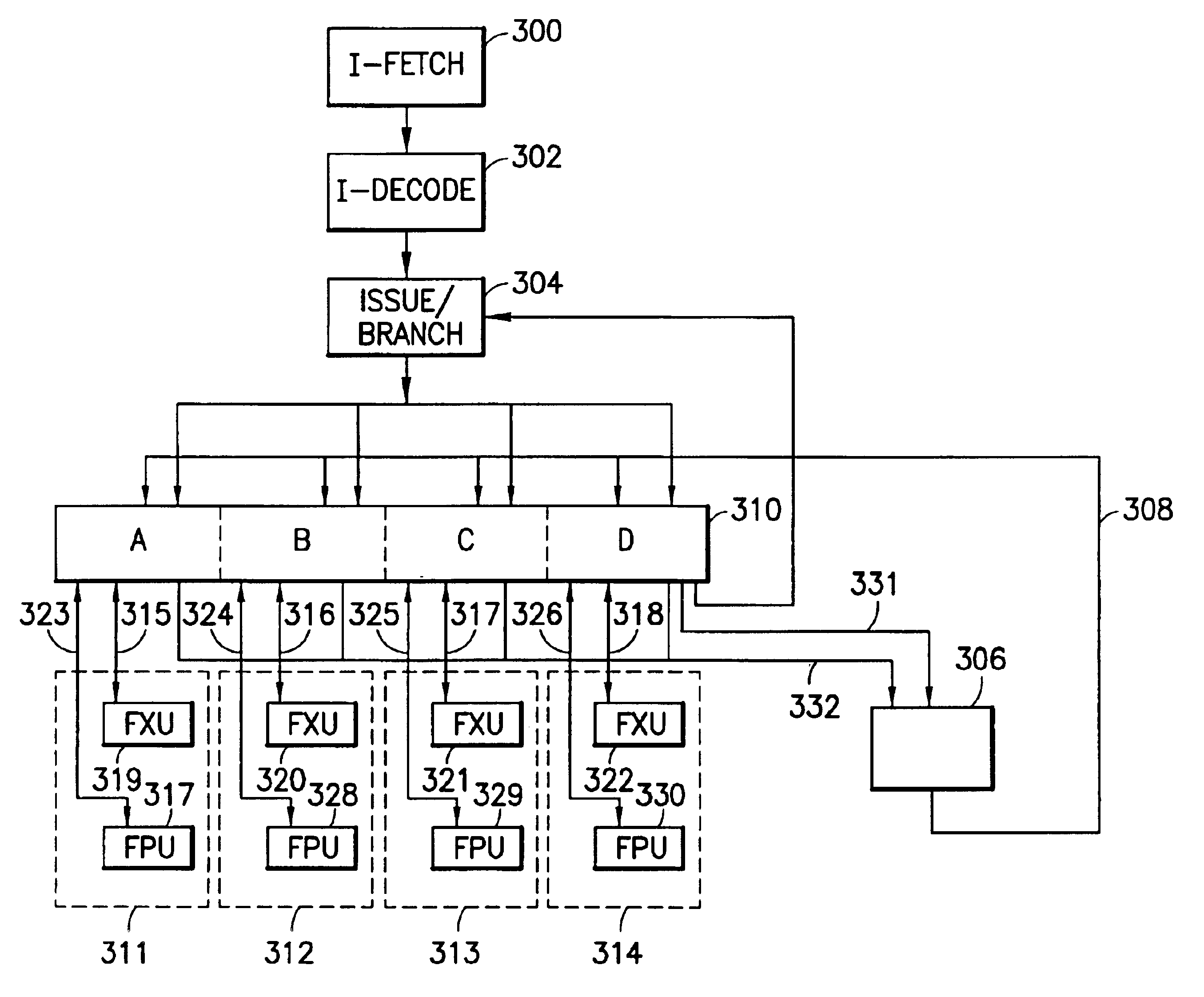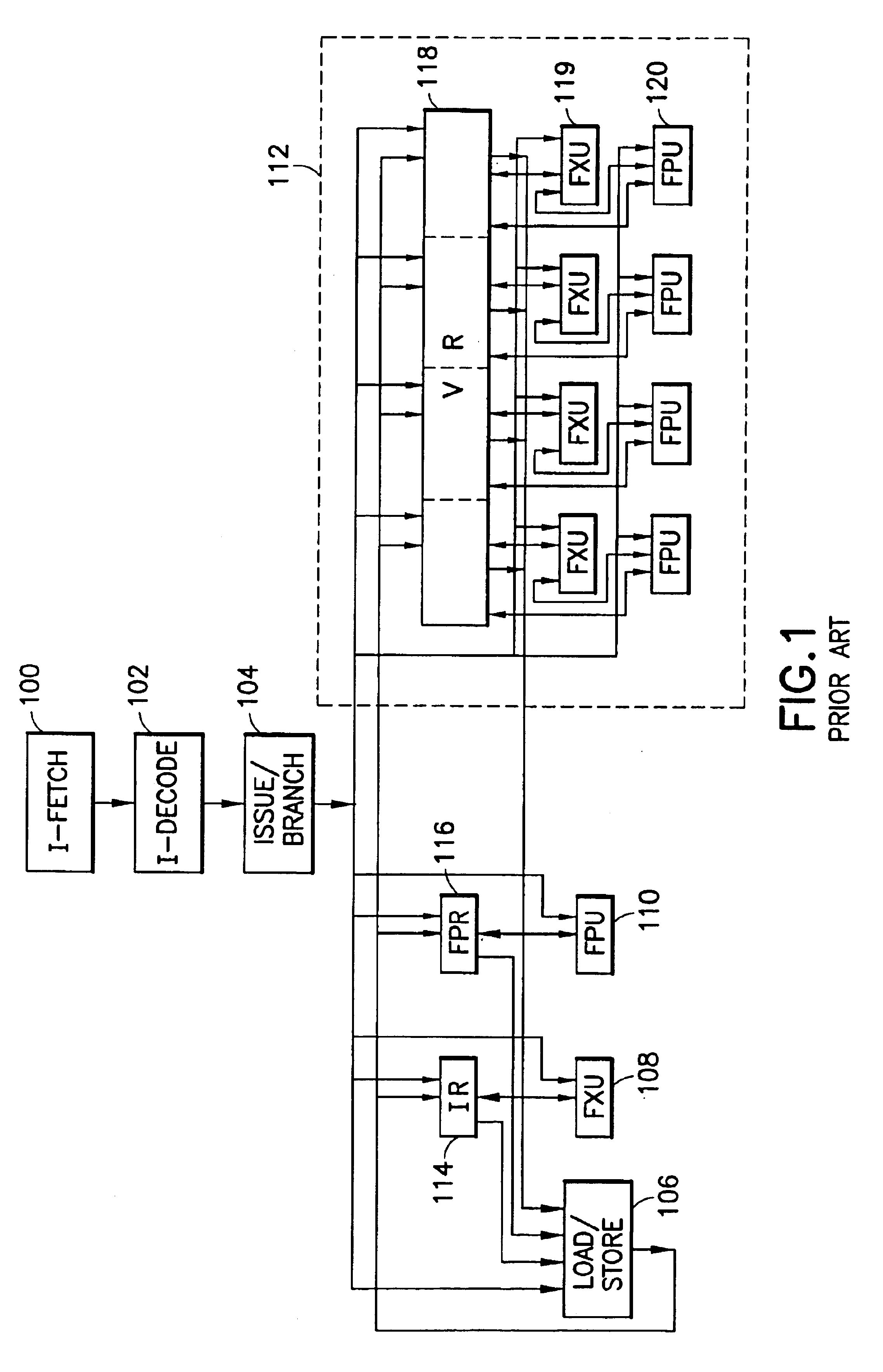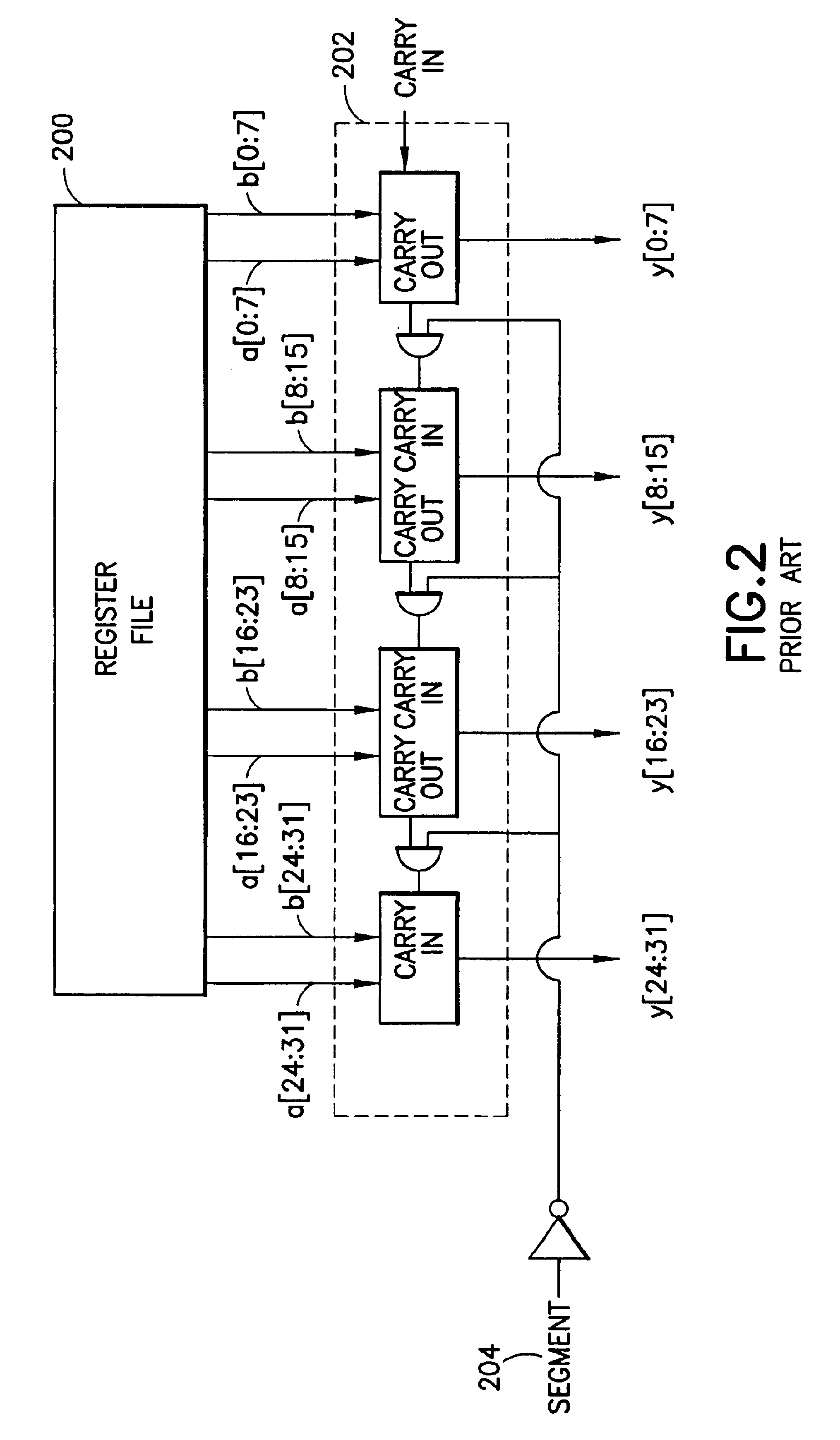SIMD datapath coupled to scalar/vector/address/conditional data register file with selective subpath scalar processing mode
a datapath and subpath technology, applied in the field of microprocessor implementation, can solve the problems of inefficient and expensive use of separate scalar and simd processors, inability to achieve large-scale applications, so as to reduce the overall processor core size, not compromise the performance of simd data processing, and increase power consumption and heat dissipation
- Summary
- Abstract
- Description
- Claims
- Application Information
AI Technical Summary
Benefits of technology
Problems solved by technology
Method used
Image
Examples
first embodiment
a processor implementation having a unified scalar and SIMD datapath in accordance with the invention will now be described with reference to FIG. 3. In FIG. 3, the scalar and SIMD data path processing capabilities have been combined, the SIMD vector datapath now subsuming scalar processing. Scalar processing preferably occurs in one of the units used for processing one element of a vector data type. This data unit is designated the “preferred slot” and provides addresses for the branch unit and the load / store unit, as will be described below.
In the following description, it should be understood that this is an exemplary implementation, and other implementations may use different execution resources and signaling structures. Also, while the description of function contained herein is based on load / store RISC architectures, it will be apparent to those skilled in the art that alternative instruction set architectures, e.g., CISC architectures with merged memory access / execute capabil...
PUM
 Login to View More
Login to View More Abstract
Description
Claims
Application Information
 Login to View More
Login to View More - R&D
- Intellectual Property
- Life Sciences
- Materials
- Tech Scout
- Unparalleled Data Quality
- Higher Quality Content
- 60% Fewer Hallucinations
Browse by: Latest US Patents, China's latest patents, Technical Efficacy Thesaurus, Application Domain, Technology Topic, Popular Technical Reports.
© 2025 PatSnap. All rights reserved.Legal|Privacy policy|Modern Slavery Act Transparency Statement|Sitemap|About US| Contact US: help@patsnap.com



